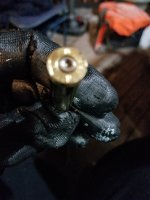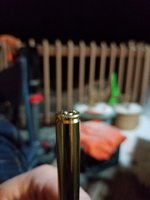Go read this first:
Mysteries And Misconceptions Of The All-Important Primer
http://www.shootingtimes.com/ammo/ammunition_st_mamotaip_200909/
According to the article, the most common cause of misfires is high primers. The primer anvil has to be firmly seated, and then the cup/primer cake, pushed on to it, setting the "bridge distance". So, maybe that is your problem.
I had this one:
I reamed the primer pockets too deep and firmly seated the primer, but none of the primers went bang in my M70. It was very frustrating as this was with match ammunition and I was shooting in a 600 yard Mid range match. As you can see in the picture below, at least 20 rounds did not go bang, while I was in position, during my shooting period! However, fired every single one of those misfired rounds in my M1a, and they all went bang!
A final one, sometimes you run into a dud primer. Bad things happen. Sometimes the firing pin strike is not enough to set off the primer cake, but enough to cause the primer cake to crack. Next firing pin fall, no primer cake between the anvil and cup, and no bang.
Off center firing pin hits increase the possibility of a misfire. One of these days I will create a picture, but basically the more off center the firing pin hit, the less likely the primer is going to go off. A lot of people not merely don't know about this, they are in total denial about this:
Firing pin strike
http://thefiringline.com/forums/showthread.php?t=527973&highlight=primer+offset
On other thing, just how old is your M70? I have been very good about replacing firing pin springs. The things do wear out.



